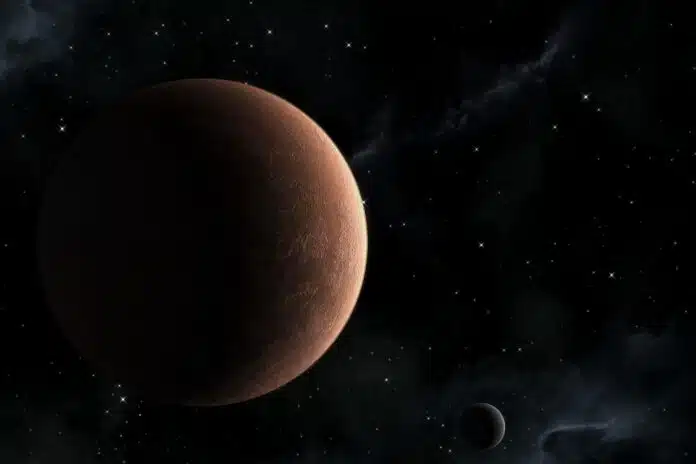
By Pranjal Mehar 4 Nov, 2024
Collected at: https://www.techexplorist.com/saturn-moon-titan-insulating-methane-rich-crust/91917/
Saturn’s largest moon, Titan, is unique for its atmosphere and surface liquids, including rivers, lakes, and seas. Unlike Earth’s water, these liquids consist of hydrocarbons like methane and ethane due to Titan’s extremely cold temperatures. The moon’s surface is composed of solid water ice.
A new study by planetary scientists at the University of Hawai’i at Mānoa has found that methane gas may be trapped within Titan’s ice, creating a thick crust up to six miles deep. This crust could warm the ice shell beneath it and help explain Titan’s methane-rich atmosphere.
The research team found that Titan’s impact craters are unexpectedly shallow, with only 90 craters identified. Their observations, based on NASA data, suggest unique geological processes on the moon.
Research associate Lauren Schurmeier said, “This was very surprising because, based on other moons, we expect to see many more impact craters on the surface and craters much deeper than what we observe on Titan. We realized something unique to Titan must be making them become shallower and disappear relatively quickly.”

To explore what lies beneath Titan’s surface, researchers used computer modeling to examine how Titan’s topography might change after an impact, mainly if covered by a layer of insulating methane clathrate ice. They compared two possible initial depths of craters based on similar fresh craters on Ganymede, another icy moon.
The modeling indicated that the methane clathrate crust is likely between five to ten kilometers (about three to six miles) thick, as this thickness produced crater depths that aligned with observations.
Schurmeier noted that this crust warms Titan‘s interior and leads to rapid topographic relaxation, causing craters to be shallow at a rate comparable to fast-moving glaciers on Earth.
Estimating the thickness of Titan’s methane ice shell is crucial because it could provide insights into the origins of the moon’s methane-rich atmosphere. This understanding also aids researchers in studying Titan’s carbon cycle, its liquid methane-based “hydrological cycle,” and its evolving climate.
These new findings clarify Titan’s topography and suggest that its interior is likely to warm rather than cold, rigid, and inactive, as previously believed.
According to Schurmeier, methane clathrate is stronger and better insulating than regular water ice. A clathrate crust can keep Titan’s interior warm and make the water ice shell ductile. This implies that Titan’s ice shell may be, or has been, slowly convecting.
Schurmeier said, “If life exists in Titan’s ocean under the thick ice shell, any signs of life (biomarkers) would need to be transported up Titan’s ice shell to where we could more easily access or view them with future missions.”
“This is more likely to occur if Titan’s ice shell is warm and convecting.”
Journal Reference:
- Lauren R. Schurmeier, Gwendolyn Brouwer, Jonathan Kay et al. Rapid Impact Crater Relaxation Caused by an Insulating Methane Clathrate Crust on Titan. The Planetary Science Journal. DOI 10.3847/PSJ/ad7018

Leave a Reply